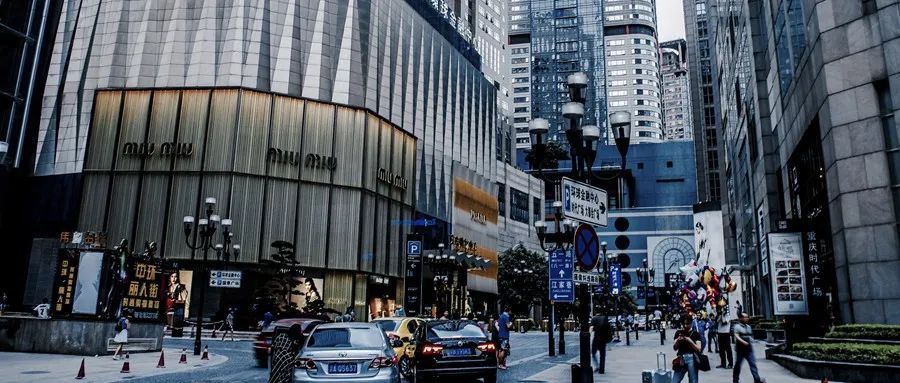Who is making "consumers"?
Author:Daily Economic News Time:2022.09.25

Photo source: Photo Network_500084944
Open a certain treasure and enter the red brick as the keyword input. You may find that a "20 -standard brick red brick" with a specification of 200x110x53mm, "direct business price" is 0.9 yuan. However, if a similar red brick is printed with a well -known brand LOGO, how much will it become? The answer is -$ 1,000.
this is a true story. In 2016, in the new autumn and winter series launched by the tide brand Supreme, a joint brick became popular network, and its product description only had a line of words: "Red bricks printed with bumps with bumps in bricks." This offer price is $ 30 US $ 30 The red brick was sold out in a day, and was once fired to $ 1,000 in the market.
It is also a red brick. Why is not only soaring in the brand LOGO, but also "a brick is difficult to find"? Some opinions believe that this cannot be taken off with consumerism. "Don't fall into the trap of consumerism" has become a popular slogan.
"The consumer culture we accept today is a product of commercialization. This kind of consumer culture is ubiquitous in our daily life." Under the influence of the brand, the value of the product no longer depends on the product component.

"Consumer: Global History of Consumers", [French] Anthony Galuzo, Ma Ya, Guangdong People's Publishing House, June 2022
As the title of the book says, today we so -called "consumers" are actually a concept of "manufacturing". In an interview with the media, Anthony Galuzo said that there are many books in France based on "manufacturing ...". These books usually show and analyze how a phenomenon is constituted in history. This title is because I want to emphasize this set of attitudes, tastes and performances that we think for granted, which is actually the product of recent economic and social dramas. "
01
From the end of the 19th century, the concept of "consumer society" was born, but for more than two hundred years. Prior to this, "the whole world is still a giant farmers." In this society, people usually produce and live a necessity. This is no stranger to us. The "male plowing and female weaving" depicts such a scene. In addition, even if there are commodities exchange, they are subject to productivity levels, there are not many remaining products, and the scope of their exchange activities is relatively limited.
In the 19th century, the industrial era greatly liberated human productivity. "Human beings have been able to get rid of the constraints of natural conditions and go further and further on the road of material pursuits." Strive to overcome the test of transportation can make goods circulating and establishing the market worldwide. "This means that the self -sufficient lifestyle has gradually no longer existed under the impact of the market economy. It is difficult to understand its production process. The author pointed out that "they have entered the fantasy of consumers, and they have become wonderful things under the eyes of people."
In this context, the emergence of the two things has greatly promoted the development of commodity consumption: one is a large company, and their appearance allows consumers to find the products they want at a glance; the other is the department store Beginning has become a lot, they urgently need a special place for centralized display for consumers to choose.

Photo source: Photo Network_500750204
In the 19th century, the bourgeoisiers who could linger and consume in department stores were generally bourgeoisie. As the leader of consumption, "the material culture of the bourgeoisie has become the origin of a broad consumer culture." In fact, as a businessman, financialist, food, food The collective name of the beneficiaries, politicians, lawyers, small businessmen and other groups, the bourgeoisie between the general public and the noble elite urgently needs to find their identity.
This "eagerness" of the bourgeoisie has its historical background. At that time, it was a stage that gradually transitioned from a level society to class society. According to the American economist and the author of the "Leisure Class" author Tusdan Bond Vanbaln, in the free myth of the bourgeoisie, wealth has become "merit itself". As a result, the bourgeoisie of the same class, but wanted to use the symbol value of consumption to occupy the product value to reflect its uniqueness. Driven by this consumer logic, consumerism swept the entire society. It was only a matter of time.
However, how does consumerism penetrate into rural and small towns and eventually become popular? The answer is, with the help of images, "business will affect every corner of the world."
"Make Consumers" takes a booklet, newspapers, magazines, movies and other media as an example, pointing out that through the presentation of images, "making omnipresent products become universal symbols and languages", "the development of images allows people to project themselves to themselves to themselves to In the social world that could not be imagined, and it was painful. "Therefore, we want to become" better "and live a life shown in magazines or Hollywood movies. How to solve the worry? Only consumption.
02
When the popularity of goods and consumers finally swept the world, the protagonist behind finally appeared -that is a large company in internationalization and multiple departments. "They control the market and cause social turmoil." The author calls the cultivation of large companies as "social engineering", and believes that it has subtly realized the legalization of business order through conscious management. Photo source: Photo Network_500615120

The promotion of consumerism in large companies was originally in crisis public relations. At the beginning of the 20th century, large companies caused dissatisfaction with the monopoly actions of various industries in the market. Against such a context, professional public relations personnel appeared. With the gradual flooding of the public media, public relations personnel have hidden a series of publicity in the media. Some seemingly objective reports are actually serving the interests of large companies, and successfully "enter the people's inner heart" "".
These publicity of consumerism is very popular. Under the circumstances, it has affected the public's life taste and consumer habits. Through the "hypnosis" of propaganda, some needs that have never been used can also be "manufactured". For example, Edward Bernes, known as the "First Public Relationship Theorist", is regarded as a "inferior female morality" in the same environment of tobacco and alcohol. The demands of gender equality connect women's smoking with the symbols of gender liberation, and make great potential in the media, ending the taboo of women's smoking in one fell swoop.
Ironically, this legendary story with "one game" is actually derived from the "propaganda" of himself in the autobiography. As historians have pointed out, "the story of cigarette consumption is not the story of consumption. As romantic as legendary. " The author pointed out that the character of Bernetus "is actually the best thing to promote themselves. They publicize their own sets of stories, let people believe in their magical power, and make their names a golden signboard of money."
It should be noted that publicity -or advertising -it does not directly affect consumer behavior, but it can still promote consumers to make "symbolic associations" by continuously hinting. "People think that goods are a tool and an indispensable part of people. Without it, people's existence is not complete." The hallucination of "buying things compensation for self -defects" is the key to selling goods.
Under the dual action of the "social engineering" and advertising promotion of large companies, the impact of consumption on society is intuitively reflected in the modern society consisting of a family consisting of a family, and men and women are "" Each is restrained in different fields. " In addition, children in the family are also the target of consumerism: "In modern families, children and merchants are natural allies, and they capture their parents' wallets together."
03
In the late 1950s, the market order of "stereotypes and rules" bored many people, and a kind of "advocating unique and manifestation of rebellion culture" appeared. However, this "new spirit" with the banner of rebellion has just become a helper of consumerism.
Photo source: Photo Network_501059975

Of course, advertisers noticed this trend, and then changed their characters and attitudes, and became "praise really humorous master". In the self -deprecating, irony, transcendence, and rude advertising remarks, the distance from the audience. The end result is that "now the typical slogans are all preaching people to become themselves', and to respect the goods as a tool for liberating themselves." For example, Nike's "Go it!" !), Apple's "Think Different", Sprite's "Promise for the True Make" ...
In the author's opinion, after 1960, "all new development is just repeating and amplifying the phenomenon that has occurred." In fact, with the rapid progress of science and technology, "the psychological and reality between people and goods have narrowed "". Now, only a little on the smartphone, the products you want can deliver the goods to the door. Because the production and consumption have completely separated, "in the eyes It is easier for those who are more likely to believe in the symbols of marketing discourse that are in trouble. "
The author predicts that the next stage of the commodity process, "perhaps the integration of people and commodities", "people will become as ductantly, liquidity, and 'exchangeability' as the product itself." It is "people will be separated from the entity and therefore have more autonomy." The author believes that Cyborg may become "the ultimate image of consumers", which means that consumers can implement themselves like running a project or building a project. Combining the concept of the "Yuan Universe" at the moment, this seems to be a reality.
In fact, as the history of consumerism is less than two hundred years of history, people will constantly consume goods. At the same time, endless consumption habits will be cultivated. We "invent" our identity through consumption- we can "invent" our identity-Desire is endless, consumption is constantly.Borrowing French writer and philosopher Jean Portryia's words, "image, symbols, information, these things we 'consumption' is the tranquility in our hearts. Its tranquility needs to have a dizziness for reality and history.Feeling. Its tranquility needs to be maintained permanently by consumer violence. "Daily Economic News
- END -
In order to support enterprises through the epidemic difficulties to relax the rental period, it was drilled by the salesperson

Customers say that it is difficult to operate during the epidemic, and I hope to p...
The flood control capacity of Huahu Airport in Ezhou will reach a hundred years, and Hubei International Logistics Core Hub will speed up again

Jimu Journalist Lu RuiCorrespondent Zhang Ya He Xiaolong Yellow TreeOn July 17th, ...